Coffee is not just a drink for a long time, but an integral part of our life. Without...

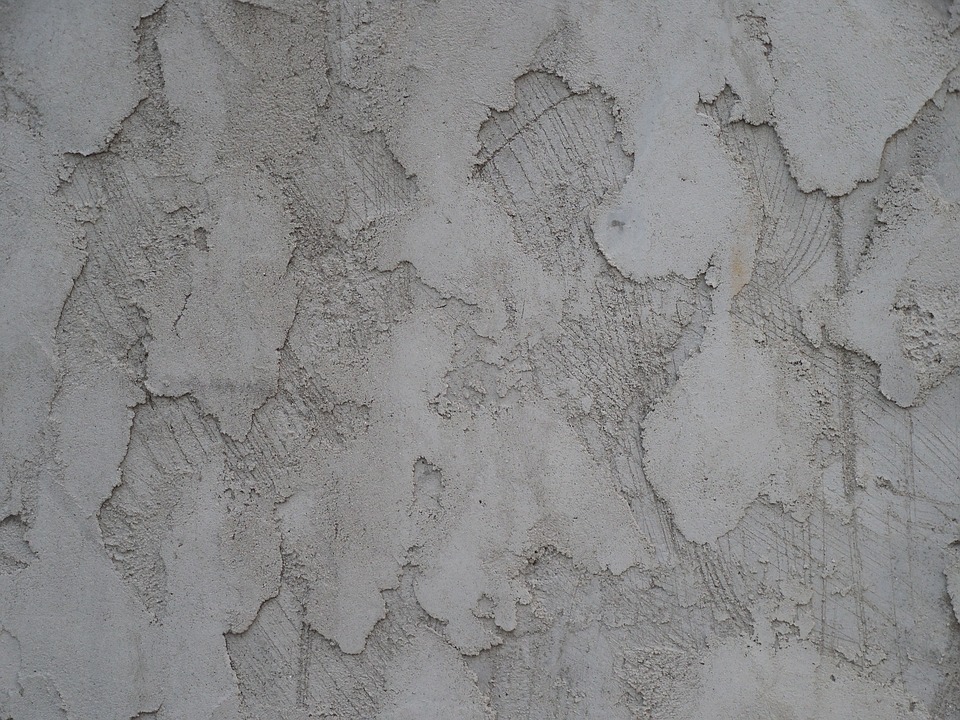
The use of gypsum in construction and everyday life has such deep roots that it can easily be attributed to the most ancient building materials. But this does not make it easier to work with him - you need to know not only how to dilute gypsum, and what proportions to use, but also many other subtleties associated with this material!
In repair work, gypsum is used very widely: both as part of other solutions as an astringent component, and "solo". You will find gypsum in plaster mixtures, modern modeling and sculptures are made from gypsum, as well as gypsum tiles. Building gypsum is a white powder with a grayish tint that intensifies when water is added. This material is obtained from gypsum stone, which is fired in kilns at a temperature of about 150 ° C and crushed to a homogeneous powder.
Depending on the grinding, you can find fine, medium and coarse gypsum - only fine grinding is suitable for construction and repair purposes! Powder, which is used in construction, is divided into three temporary groups:
Gypsum is divided into grades according to its degree of compression. For example, material labeled G-6. It is easy to guess what the letter means, but the number tells us what the compressive strength of this material is, in this case, 6 MPa. As a reminder of the school curriculum, 1 MPa (megapascal) is the pressure exerted by 10 kg per square centimeter.
For construction work, material from G-2 to G-7 is used, which belong to group B. By the way, alabaster is a generalized name that covers all building brands, and in professional terminology this term has long been abandoned, preferring to specify information using marking. A notable feature of gypsum plaster is its ability to expand when it hardens, while other materials shrink. The expansion is insignificant - the volume increases by 1%, which fits well with the needs of builders and repairmen.
What else gypsum is good for is its sufficiently high strength at a low density of 1200-1500 kg / m 3. Speaking in plain language, this material will be 2 times lighter than the same cement! In addition, it has low thermal conductivity. These are all pros, but there are also cons! The most important is the too fast curing speed. Therefore, in work it cannot be stored in this state for a long time, or rather, with all your desire, you will not succeed, since the gypsum will harden in the container.
Constant stirring will not save, moreover, this cannot be done, since gypsum will lose its characteristics every minute.
That is why gypsum is kneaded with "factories", as masters call small portions of mixtures. The master has only a few minutes to use the “winding”, during which he must not only apply it to the surface, but also level it. If this is not done, and the material hardens at least partially, it is no longer suitable for serious work! This is also called "dead" gypsum, after drying, it will crack and crumble, spoiling all your work.
Since gypsum powder has low hygroscopicity, its use is rational only in rooms with low humidity. If you are afraid for the condition of the coating, it is better to additionally cover it with a moisture-proof compound after it has completely dried. Since the structure of the material is quite porous, the surface will first need to be prepared - apply an appropriate primer.
Stocking up on plaster is an extremely bad idea! Firstly, this material cannot be called scarce, and secondly, no matter how hard you try to provide it with proper storage conditions, treacherous moisture will still find a crack through which it will penetrate into a bag or other container with gypsum and merge with it into a strong union. Even in a perfectly dry room, it will lose its qualities over time. The same applies to derivative materials - if you are going to level the walls with drywall, try not to put off the work after purchasing the materials.
But even if you purchased bags of gypsum in order to use it in the coming days, you need to pay special attention to the storage conditions of the powder. The most important and obvious condition is dryness! It is best to place the material bags 30-50 cm above ground level, for example, on pallets or on bags of other material.. If holes have formed in the bags during transportation, then it is better to close them with pieces of polyethylene.
If for some reason you doubt the quality of the powder, perform simple tests before using it. All you need to do is stir a small amount of material and apply it to the metal surface. Try to accurately record the time from the moment of stirring to the beginning of hardening - these indicators must correspond to the brand declared on the package.
Whatever brand you choose for work, building gypsum should be diluted in the opposite way - not water is added to the powder, but powder to water! Before starting work, choose a suitable container, plastic or metal, to create a solution, the main thing is that later it would be convenient to scrape off the remnants of the material from its inner walls.
Pour water into a container - one part to two parts of the powder. Then slowly, trying to distribute the powder over the entire water area, stir the mixture until the water is completely absorbed into the powder. At least a little the resulting solution should stand - if the material is slightly warmed up and thickened, it's time to use it! It is very important to remember that none of the components can be added separately to the solution that has already begun to set! By doing this, you will ruin the entire mixture, resulting in a solution with extremely low astringent characteristics.
The disadvantage of a mixture of gypsum powder and water is a very high setting rate. It is necessary for the master to gape, or to make too much batch, and write wasted! That is why ways have been devised to slow down the rate of solidification of this material without losing the rest of its characteristics. The first method is the preparation of gypsum adhesive mastic. For this composition, 15 g of glue is diluted in a bucket of water. Instead of wood glue, you can use another, more complex solution of lime and hide glue.
First you will need to prepare a lime-glue mixture. To do this, take 1 kg of skin glue, soak it in five liters of water and leave it for 15 hours - during this time it will get wet and acquire the desired consistency. 2 kg of lime dough is added to this mass, it is well stirred and boiled over low heat for 5 hours. As a result, you will receive a ready-made concentrate, which can be completely or partially diluted in water (for the whole mass - 20 liters of water) and mixed with gypsum.
For one liter of lime-adhesive solution mixed with water, 8 kg of gypsum must be added. Also calculate how much water may be needed for this mass - as you already know, it is better to add the powder to the water, and not vice versa, therefore it is recommended to mix the adhesive composition with the liquid immediately in terms of gypsum. Such a mastic begins to set no earlier than 20 minutes after its preparation, which gives enough time for "manoeuvres". By the way, adding ordinary table salt will allow you to get the opposite effect, namely, to speed up hardening!
Gypsum can rightly be called the most actively used finishing material. The likelihood that among the list of goods you buy for repair will be several bags with this component is as high as possible. Properly diluted and applied gypsum allows you to achieve exceptionally high-quality results. And about how exactly it is necessary to prepare gypsum dough, we will talk in this article.
If we want to get a high-strength gypsum mortar, then it is best to use a ratio of two parts of powder to one part of water. However, in the vast majority of cases, gypsum dough is required to be softer. And in order to get an average gypsum solution, a liter of water is required for one and a half kilograms of powder. Often, something thinner is required for work, in which case a kilogram of gypsum per liter of water will be the best option. By the way, when medical gypsum is prepared, water and powder are taken in approximately equal amounts.
Gypsum is often used to create various crafts. And in this case, as a rule, it is poured into molds, where the solution solidifies and takes on the necessary shape. Speaking about the consistency of the solution for such a fill, we can name the proportions of gypsum and water 7:10. A solution of this consistency is quite liquid and perfectly penetrates into all spaces of the form, which is what we need. But at the same time, the finished product may turn out to be too brittle, so it is best to add a couple of tablespoons of PVA glue to the resulting solution before pouring.
If we are talking about gypsum for topiary, then the consistency of the solution should be similar to thick sour cream, since the liquid solution will harden longer. By the way, to prepare such a solution, it is best to use alabaster, as it hardens especially quickly.
In the beginning, we need a container, and it is best to take a disposable one. The reason is simple - in the case of reusable use, washing such containers, we risk clogging the drain pipes. Of course, the container must be clean. Gypsum must be poured evenly into the water. In this case, it is best to interfere with a stainless steel spatula, or something made of hardwood. As for water, it can be tap water. Try not to stir the mortar for too long, as the finished product or plaster layer may become weak as a result.
As for mixing, it is important to follow a certain technique. The main thing is to prevent the formation of lumps. To do this, you need to evenly distribute the gypsum powder over the surface of the water, and then wait a few minutes until the powder is saturated with liquid. This is followed by a period of intensive stirring for 2-3 minutes. The goal is to make the solution as homogeneous as possible, and also to release most of the air bubbles from it.

Among the numerous materials of the widest range of applications, building gypsum occupies a special niche. It is a mineral of natural origin, which consists of aqueous calcium sulfate, which has a pale gray or white color. Depending on the type, it can have both a granular (alabaster) and fibrous (selenite) structure.
Natural gypsum stone is a material with enhanced plasticity, which is characterized by ease of application on all types of surfaces. At the same time, it hardens quite quickly (20-60 minutes) and can be easily processed with certain tools.
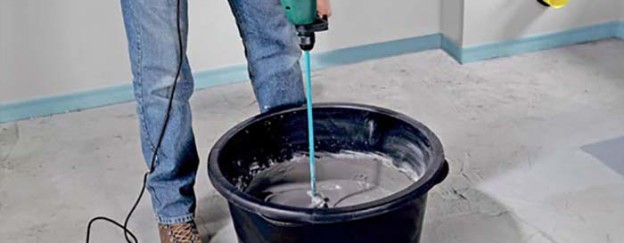
To mix a thicker solution, you need to take gypsum and water in a ratio of 2 to 1 - it is this consistency of the mass that is most often used in finishing work. To obtain a composition of the so-called medium density, it is required to combine 1 liter of ordinary tap water and 1.5 kg of gypsum powder in a container. But in order to achieve a more liquid building "dough", it will be enough to mix gypsum and water in equal proportions - 1 to 1.
The main rule that is important to observe during the preparation of the gypsum mixture is the gradual introduction of the main powder component into water solution. Portioned addition of gypsum and thorough mixing will make it possible to avoid the formation of lumps, which will favorably affect the quality of your work. It is desirable to work with plaster by using tools made of hard wood and high-alloy steel (stainless steel).
However, in the conditions of work with the specified material, the use of spatulas made of rubber is also allowed. When working with "liquid" gypsum, time is also important. As already noted at the beginning of the article, the approximate time for gypsum to harden is from 20 minutes to an hour. From the next application of the solution, which has already begun to solidify, it is worth refusing, because otherwise there is a high probability of deterioration in the quality of work.
Gypsum mixture is recommended to be prepared for the amount of required actions that can be performed for the named time period. At the end of the article, I would like to once again emphasize such an amazing property of gypsum stone as versatility. This quality is explained by the fact that it finds application in versatile areas - this is the manufacture of paint and varnish products, and the creation of all kinds of crafts, etc.
This material is very plastic, applied to almost all types of surfaces, hardens quickly and is easy to process. It is used in various sectors of the economy: as a fertilizer, components of pulp and paper production, ingredients for the production of paints and enamels. And, of course, burnt powder is used for casting internal elements of building decor, as a binder in construction.
There are special types of building brands. High-strength mixtures and gypsum-cement (pozzolanic) binders are produced. Working with plaster is not very difficult. Hardening, it forms a stone-like mass that is very convenient for processing. Therefore, it is very widely used for the production of various crafts. Here its clear advantage is the high fluidity of the solution, which is very convenient for casting products.
The finely porous structure makes gypsum an indispensable material for creating all kinds of injection molds, also with the addition of high-temperature components.
The disadvantages include its low strength and hygroscopicity, so the use of such materials in rooms with high humidity is undesirable. If necessary, waterproof coatings should be applied. In this case, you need to consider how to work with gypsum correctly. The porous structure contributes to the absorption of the coating applied directly to the surface. Therefore, it is necessary to carry out a preliminary primer of such a surface under an appropriate coating.
It should also be noted the time of work with the solution. Here, in many respects, the role in which proportions to dilute gypsum plays a role. But, in general, its hardening time is from 20 minutes to an hour. Reuse of gypsum that has already begun to harden is undesirable, because. this affects the quality of work for the worse. This circumstance must be taken into account before using plaster. A solution with its content should be prepared only for the amount of work that can be completed in a specified period of time.
As practice shows, he has not yet been able to find a full-fledged replacement, so you need to know how to properly dilute gypsum. This is always useful for minor repairs, filling work, etc. When preparing a plaster test, proportions must be taken into account. With more powder, the dough is thicker, the material hardens a little faster. And vice versa. We can say that for a thicker solution, the ratio of gypsum and water will be about 2: 1, respectively.
The average density (let's call it normal) will be obtained if about one and a half kilograms of the mixture is added to a liter of water. A completely liquid dough, or rather a solution, will turn out in the ratio of water and gypsum one to one.
When preparing a gypsum mortar, you need to know how to knead the gypsum correctly. The main thing here is to pour the powder into the water in the above proportions with constant stirring. And not vice versa. Moreover, it should be added evenly and gradually, avoiding the formation of lumps. You need to be aware that this may release a small amount of heat.
In addition, too long mixing is undesirable, because. leads to rejuvenation. To work with gypsum, a tool made of stainless steel or hard wood is recommended, it is possible to use special rubber spatulas, etc. As already mentioned, the time of work with gypsum mortar is quite limited. Therefore, the technology of working with gypsum, in addition to determining the “portioning” of its preparation, must also take into account the “layering” of processing associated with this.
It is necessary to prepare the already processed part (until it is completely hardened) with special notches. In case of a long break in work, the already applied and hardened layer should be slightly moistened before applying the next layer of material. If it is necessary to slow down the setting reaction of gypsum, you can use the so-called glue water (glue from the core or gelatin solution). The opposite effect can be achieved by adding ordinary table salt. In each case, it is worth experimenting with the proportions of the components.
Or for making small sculptures. The technology for preparing the solution is quite simple. The main thing is to know in what ratio the components are mixed. It is worth noting that gypsum is the main material for making crafts.
Before answering the question of how to properly dilute gypsum for crafts, it is worthwhile to figure out what kind of material it is. First of all, it is very flexible. Gypsum can be applied to almost any kind of surface. The material is easy to process and quickly hardens. Gypsum is used in many industries: as a fertilizer, as one of the components of paper and pulp production, as a component of enamels and paints. The material is also used for the manufacture of interior decorative elements. Gypsum is often used as a binder in construction.
Since diluting gypsum for crafts is a simple process, it is worth considering certain drawbacks of the material. This will make it much easier to work with him. First of all, gypsum has low hygroscopicity and strength. Therefore, it is not recommended to use decorative elements made of this material in rooms with high humidity. In such situations, additional processing is required. For reliability, finished crafts should be covered with a coating layer that protects against moisture.
Before starting work, the hygroscopicity of gypsum products should be taken into account. They are well absorbed by any coating. Therefore, it is recommended to apply a primer coat on the surface of the product. Only then can a coating that protects against moisture be used. 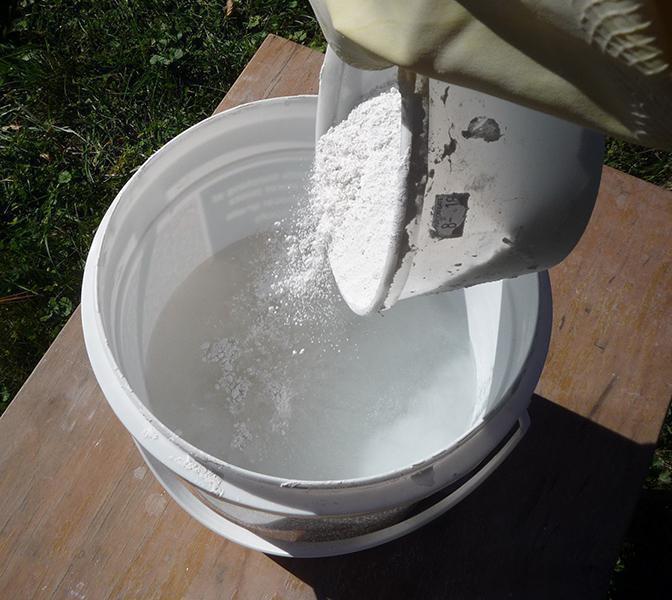
There are several basic ways to make a gypsum mortar for making crafts. The easiest method is to dilute the powder with water. In this case, it is important to observe all proportions. For 7 parts of gypsum, at least 10 parts of water are required. It is worth noting that it is worth preparing the solution with extreme caution so that there are no lumps. It is recommended to add gypsum to water, and not vice versa. This method also eliminates the formation of dust.
This solution is easy to use. From it you can make products of almost any shape. However, it is worth considering that crafts are not very strong. They break and crumble easily. So how to breed plaster for crafts?
So, how to breed gypsum for crafts. This method of preparing the solution is a little more complicated than the previous one. However, the mixture allows you to make stronger and more reliable products that retain their appearance for many years.
To prepare the solution requires: 6 parts of gypsum, 10 parts of water, 1 part The components are gently mixed until a homogeneous mass is formed. 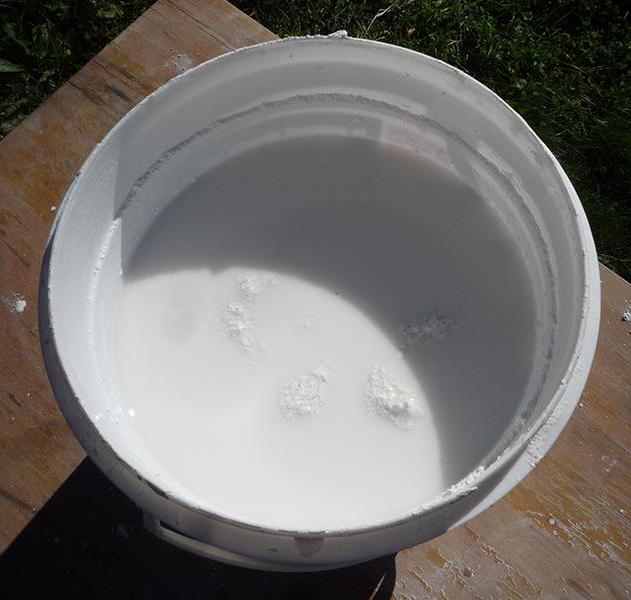
How to breed gypsum for crafts of different colors? This will require:
So, how to dilute gypsum for crafts from a multi-colored solution? In fact, the process is quite simple. To begin with, it is worth pouring gouache into the jar and the amount of water necessary to prepare the solution. In order for the paint to dissolve completely, it is recommended to close the jar with a lid and shake it a little.
The colored water should be poured into the dishes where the solution will be prepared. Here, observing all proportions, it is necessary to gradually add gypsum. Pour the powder into the liquid in a thin stream, constantly mixing the components. This will achieve a uniform consistency of the solution. The mixture should resemble thick sour cream. Stir the solution thoroughly during preparation so that there are no lumps and air bubbles. Otherwise, holes will form in the finished product. 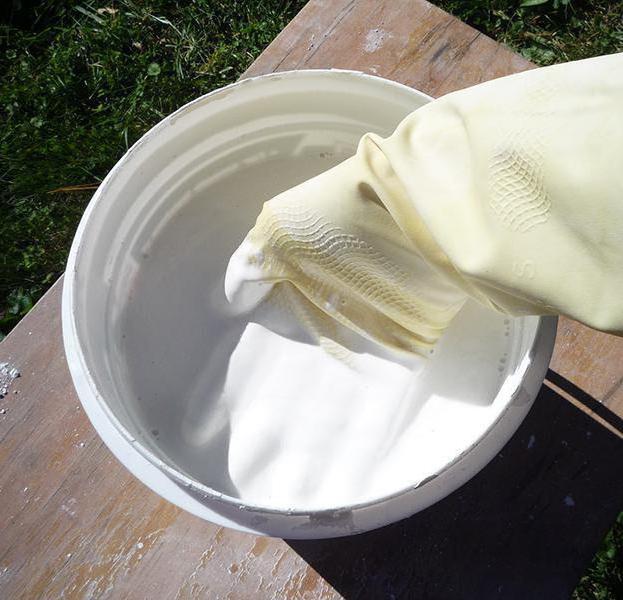
Now you know how to dilute gypsum for crafts. How long do products dry? The gypsum solution sets and gradually hardens 4 minutes after its manufacture. Therefore, work with the finished material should be quick and accurate. Complete hardening of gypsum occurs within half an hour. To make the setting of the solution slower, it is worth adding a little water-soluble animal-based glue to the solution.
On the this moment There are many creative kits for sale. How to dilute gypsum for crafts Lori, and the material from other kits for creating figurines, as a rule, is always indicated in the instructions. It should be studied before starting work, as the solution dries quickly. It should be noted that in some kits for creativity, gypsum analogues are used. The most common of them is alabaster.
This powder has a grayish tint and has a fine structure. The material is obtained as a result of heat treatment of two-water gypsum. Thanks to this, the finished solution received completely different characteristics. It is worth noting that outwardly alabaster and gypsum are very similar.
Among the main differences between these substances, it is worth highlighting:
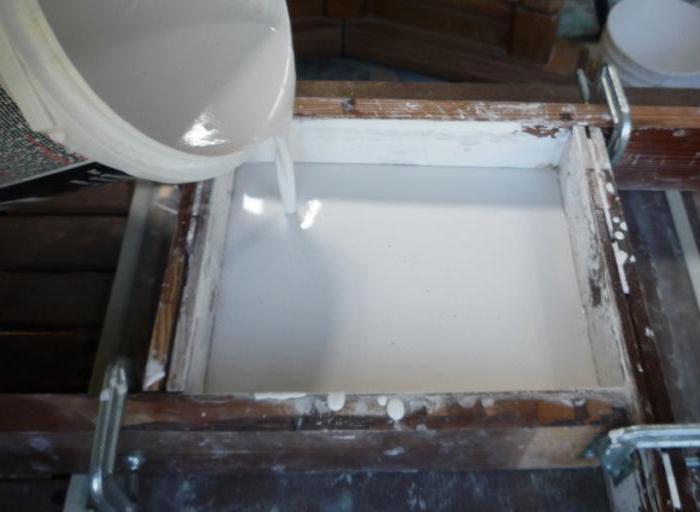
You can determine the solidification time of the material by examining specifications mixtures. In general, the setting of the alabaster solution is observed 6 minutes after the dilution of the substance. Partial hardening occurs after 30 minutes. It is worth noting that a strengthened and dried solution is able to withstand a load of 5 MPa. Alabaster dries completely within 1-2 days. Despite the fact that products made from this material are stronger, it is not recommended to use the solution for activities with children, as it is not entirely safe for health. Gypsum in this case is preferable.